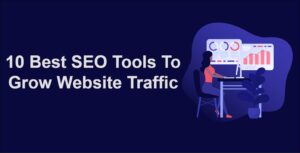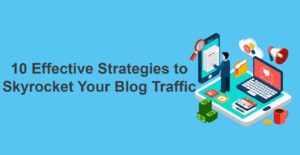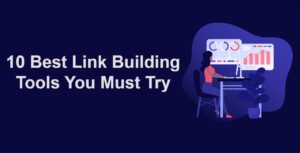In the ever-evolving world of digital marketing, search engine optimization (SEO) remains a crucial aspect of driving organic traffic to your website. Among the various elements of SEO, on-page optimization holds a special place.
On-page SEO involves optimizing individual web pages to rank higher in search engine results and attract targeted traffic. If you’re looking to enhance your website’s visibility and improve your SEO game, you’re in the right place. In this comprehensive guide, we’ll delve into essential tips to increase on-page SEO effectively. Let’s unravel the secrets to boosting your website’s search engine ranking and driving more organic traffic.
Congratulations! You’ve taken a deep dive into the world of on-page SEO and armed yourself with actionable tips to increase your website’s search engine visibility.
By optimizing your title tags, crafting compelling content, utilizing strategic internal linking, and implementing advanced techniques like semantic SEO and schema markup, you’re on the path to dominating the search results.
Remember, SEO is an ongoing process – regularly monitor your performance, stay updated with industry trends, and adapt your strategies to evolving search engine algorithms. With dedication and persistence, your efforts will pay off in the form of improved organic traffic and enhanced user engagement. So go ahead, put these on-page SEO tips into action, and watch your website climb the search engine ranks!
Understanding On-Page SEO
What Is On-Page SEO?
On-page SEO, often called “on-site SEO,” encompasses all the tactics and techniques employed directly on a web page to improve its search engine ranking and overall visibility. The primary goal of on-page SEO is to make a web page as user-friendly and search engine-friendly as possible, ensuring that search engines understand the content and its relevance to specific queries.
Key Elements of On-Page SEO
On-page SEO is a fundamental component of a successful digital marketing strategy. It involves content creation, keyword optimization, and technical improvements to ensure your web pages are visible but also engaging and user-friendly.
By focusing on the key elements of on-page SEO, you can enhance your website’s search engine visibility, attract a larger audience, and establish your online presence as a reliable and valuable resource in your niche.
Let’s dive into the core elements that constitute on-page SEO and explore how they impact your website’s performance:
1. Enhancing User Experience
On-page SEO practices not only improve your website’s search engine ranking but also enhance the overall user experience.
2. Targeted Content Optimization
Optimizing individual web pages allows you to target specific keywords and phrases that align with your audience’s search intent.
3. Search Engine Visibility
Effective on-page optimization signals to search engines that your content is relevant, leading to improved visibility in search results.
4. Targeted Traffic:
By optimizing for specific keywords, you attract visitors interested in the content you offer, increasing the likelihood of conversion.
5. Credibility and Trust:
High-quality, well-optimized content builds trust with your audience and positions your website as an authoritative source in your niche.
6. Competitive Advantage:
Strong on-page SEO can help you outperform competitors and capture a larger share of your target audience.
Tips to Increase your On-Page SEO
Now, let’s explore the actionable tips that will help you elevate your on-page SEO efforts.
1. Conduct Comprehensive Keyword Research
Understand Search Intent: Research and understand the intent behind keywords – whether users are seeking information, products, or solutions.
Keyword optimization involves strategically incorporating relevant keywords within your content. Conduct thorough keyword research to identify the terms and phrases your audience is using to search for information. Once you’ve identified these keywords, integrate them naturally into your content, including the title, headings, body text, and meta tags.
Use Keyword Research Tools: Utilize tools like Google Keyword Planner, SEMrush, and Ahrefs to identify relevant keywords and their search volume.
Example: If you have a website that offers digital marketing services, optimizing for keywords like “digital marketing strategies” or “SEO services” can attract the right audience.
2. Optimize Title Tags (H1, H2, H3, etc.):
Keyword Placement: Include your target keyword at the beginning of your title tag to signal relevance to search engines. Engaging and Descriptive: Craft compelling titles that accurately describe the content and encourage clicks.
Header tags structure your content and make it more readable for both users and search engines. The H1 tag should typically be reserved for the main heading of the page, while H2 and H3 tags are used for subheadings. These tags help search engines understand the hierarchy and importance of content.
Example: In a travel blog post, the H1 tag could be “10 Must-Visit European Cities,” and under each city’s description, you might use H2 tags for headings like “Attractions,” “Where to Stay,” and “Local Cuisine.”
3. Create High-Quality Content
Valuable and In-Depth: Focus on creating content that provides comprehensive information and addresses the user’s query.
High-quality, relevant, and engaging content is the foundation of on-page SEO. It’s crucial to create content that addresses the needs and interests of your target audience. Your content should provide value, answer questions, and fulfill user intent.
For example, if you run a cooking blog, an in-depth recipe post with step-by-step instructions and high-resolution images can be considered high-quality content.
4. Craft Meta Descriptions
Summary of Content: Write concise and engaging meta descriptions that summarize the content and encourage clicks. Include Keywords: Incorporate relevant keywords naturally in the meta description.
The meta description is a brief summary of your web page that appears below the title tag on the SERP. It should be compelling, concise, and encourage users to click on your link. While meta descriptions don’t directly impact rankings, they play a significant role in attracting clicks.
Example: For a blog post about travel tips in Europe, a meta description might read, “Discover the best travel tips for exploring Europe’s hidden gems. From budget-friendly stays to must-visit attractions, plan your dream European adventure.”
5. Utilize URL Structure
Short and Descriptive: Keep your URLs short and include a relevant keyword to give users an idea of the page’s content.
Avoid Stop Words: Eliminate unnecessary words like “and,” “the,” and “of” from your URLs.
6. Optimize Images
Use Descriptive File Names: Rename image files to include descriptive keywords before uploading them. Alt Text: Add alt text to images, providing context for search engines and improving accessibility.
Optimizing images involves using descriptive filenames and adding alt text to images. Alt text provides a brief description of the image content, making it accessible to users with disabilities and helping search engines understand the context of the image.
Example: If your web page includes an image of a picturesque beach, the alt text could be “Beautiful Beach Sunset on the Mediterranean Coast.”
7. Internal and External Links:
Create Relevant Links: Internally link to relevant pages within your website to guide users to additional valuable content. Anchor Text: Use descriptive anchor text that reflects the content of the linked page.
Incorporating internal links (links to other pages on your website) and external links (links to reputable external sources) can enhance the user experience and credibility of your content. When using internal links, make sure they are relevant to the topic and provide additional value to the reader.
Example: In a blog post about fitness, you might include internal links to related articles like “Healthy Eating Tips” or “Effective Workout Routines” within the text.
8. Mobile-Friendly Design
In an era where mobile devices dominate web traffic, ensuring that your web pages are mobile-responsive is crucial. Google prioritizes mobile-friendly sites in its search rankings, so it’s essential to provide a seamless experience for mobile users.
Example: A mobile-friendly website should automatically adjust its layout and font sizes to fit smaller screens, ensuring easy navigation and readability.
9. User Experience
User experience encompasses a range of factors, including site layout, readability, and navigation. It’s essential to create a website that is user-friendly, engaging, and easy to explore. Positive user experiences can lead to longer page visits and lower bounce rates, both of which are factors Google considers when ranking pages.
Example: A blog about productivity tips should have clear navigation menus, legible fonts, and a well-structured layout for easy reading.
Advanced On-Page SEO Techniques
For those ready to take their on-page SEO to the next level, let’s explore advanced SEO techniques.
1. Semantic SEO
LSI Keywords: Incorporate Latent Semantic Indexing (LSI) keywords – synonyms and related terms – to signal relevance to search engines.
Contextual Optimization: Write content that covers a topic comprehensively, addressing related subtopics and aspects.
2. Schema Markup
Enhanced Rich Snippets: Implement schema markup to provide search engines with additional information about your content, leading to enhanced rich snippets in search results.
Structured Data: Utilize schema markup to highlight elements like reviews, events, products, and recipes.
3. SSL Encryption
Secure Connection: Implement SSL encryption to ensure a secure connection between your website and users’ browsers.
Search Engine Preference: Search engines often prioritize secure websites in search results.
4. Long-Form Content
Comprehensive Coverage: Create long-form content that dives deep into a topic, providing valuable insights and information.
Linkable and Shareable: Long-form content is more likely to earn backlinks and social shares.
5. Voice Search Optimization
Conversational Keywords: Optimize for conversational keywords that users are likely to use in voice searches.
Featured Snippets: Structure your content to appear in featured snippets, which are commonly read out in voice search results.
How to Measure your On-page SEO Success
After implementing these on-page SEO tips, it’s essential to monitor your progress and adjust your strategies as needed.
1. Google Analytics
Traffic Analysis: Monitor the traffic coming to your website, including sources, page views, and user behavior.
Bounce Rate: Keep an eye on your bounce rate – the percentage of visitors who leave your website after viewing only one page.
2. Search Console
Performance Insights: Use Google Search Console to track your website’s performance in search results, including clicks, impressions, and average position.
Indexing Issues: Monitor for any indexing errors or issues that may affect your website’s visibility.





